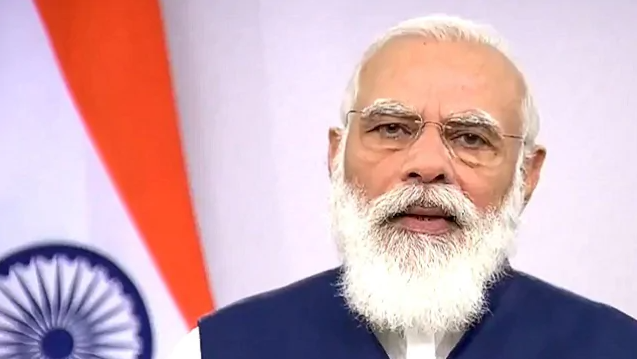These are the five major takeaways from Prime Minister Narendra Modi’s meeting with chief ministers.
Keeping the economy afloat with no more lockdowns, going back to the drawing board to the test-track-treat-contain strategy that won over COVID-19 the first time, shedding ‘COVID-19 fatigue’, thinking more of testing and less of the vaccine and sticking to the world-wide experience of vaccine roll-out as nearly 90 percent of all fatalities are of those over 45 years of age – these were the five major takeaways from Prime Minister Narendra Modi’s meeting with chief ministers.
The major relief for all was the PMs message that a lockdown was not the way to deal with the second wave which had already crossed the peak of the first wave. The economy nose-dived during the lockdown in 2020 as the government had no other way to go given there was no testing or quarantine infrastructure in place.
Those aware of the PM’s thinking say the Centre is no more in favour of lockdowns, as the PM himself enumerated that the government is now far more prepared through testing and medical infrastructure to fight the second wave. However, night curfews could continue as a psychological measure to keep people wary of the threat of the virus but the PM specified that it be done from 10 PM to 5 AM so that impact on the economy is minimal.
Wait for vaccine turn
Another major message was the PM’s word that India was not doing anything different from the developed countries (which are badly affected by COVID-19) when it comes to the criteria for vaccination. The government is going by hard statistics here – which say that nearly 90 percent of all deaths in India due to COVID-19 have happened in the age group of over 45 years.
So, while the younger population, of below 45, is falling more prone to infection due to them being a mobile workforce than the elderly, the former also has a much better chance of recovering than the latter. In fact, the mortality rate (those dying among those infected) of above-45 aged people due to COVID-19 is nearly 2.9 percent, which is far above the overall 1.3 percent mortality rate of the country.
With vaccine supplies being limited till June or July while the Sputnik and other vaccines get approval, the government is avoiding a panic rush for the vaccine which may result if all above 18 are allowed to take the vaccine. Limited availability of vaccinators is another issue.
The government has also studied the vaccine roll-out pattern in the US, UK, France, Sweden and Australia as well as WHO advice to make a case that nowhere has the vaccine been opened for all. The aim of vaccination, the government says, is to save lives and reduce mortality.
However, with greater supplies coming in over the next two-three months and, if a majority of the above 45 population is vaccinated by then, the Centre is open to bring in more age-groups into the ambit.
Going back to the Drawing Board
“We are more concerned about the nearly 650 daily fatality figure than the 1.27 lakh daily infections. It is time to go back to the drawing board, recalibrate and follow the model which was a success,” a senior official told News18 about the thought behind PM’s test-track-treat-contain model spelt out to the CMs. There is an acknowledgment that the states have done well over the last one year but some COVID-19 fatigue and complacency has set in both amongst the administrations and the people.
While the lockdown last year was able to control the spread of the virus, the real trick was done by extensive testing like in Indore in Madhya Pradesh, dutiful contact tracing like in Bhilwara in Rajasthan, treatment on war-scale in states like Uttar Pradesh and Rajasthan and micro-containment strategies to isolate pockets of heavy infections. The PM has asked CMs to return to the same model and put the focus back on the mitigation measures against COVID-19. “Putting a lockdown is easy but the harder way is to enforce the test-track-treat-contain model diligently,” a senior official toldNews18.
The PM also highlighted how the vaccine roll-out seems to have made states forget about testing as the latter numbers have dropped. Sharper has been the drop in the ‘gold standard’ RT-PCR tests, resulting in higher test positivity rates now. The weekly test positivity rate in the first week of April stands at 8.4 percent, which is four times the weekly test positivity rate of 2.2 percent in the first week of March — figures that underlines the seriousness of the second COVID-19 wave.
While opposition-ruled states and the Centre are taking political potshots on each other over vaccine supply and lowering age-groups, officials said the focus should be on the alarmingly rising test positivity numbers amidst decreasing tests and rising cases. The PM tried to strike a conciliatory note before the CMs, saying he could see politics being played over the vaccine but he won’t say a word as he has a bigger job of fighting COVID-19 at hand.


